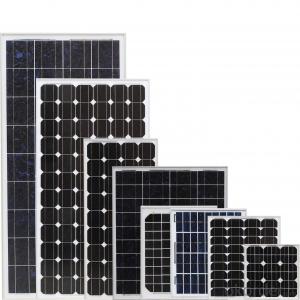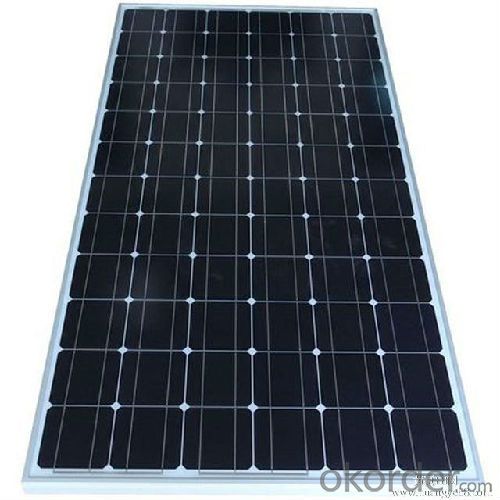Factory Solar Panels 250W Solar Module High Efficiency
- Loading Port:
- China Main Port
- Payment Terms:
- TT or LC
- Min Order Qty:
- -
- Supply Capability:
- 10000000 watt/month
OKorder Service Pledge
OKorder Financial Service
You Might Also Like
1.Structure of Solar Module Description
Solar modules, which are widely used in ground mounted utility-scale PV plants, large-scale and small civil and commercial power generating system such as BIPV combined to the grid, roof-mounted PV power system, rural electrification, communications, emergency auxiliary power. NEXTECK, as one of the solar module supplier, has the capability to offer a wide range of advanced, high performance solar modules with integrated high efficiency. Energy efficient and cost effective Mono crystalline and Polycrystalline, amorphous silicon and CIGS thin film solar cells are available. We have the right products for different applications.
2.Main Features of the Solar Module
Quick Details
| Place of Origin: | Zhejiang China (Mainland) | Brand Name: | CNBM | Model Number: | PLM-240P-60 |
| Material: | Monocrystalline Silicon | Size: | 1650*992*40mm | Number of Cells: | 60 |
| Max. Power: | 260 | Color: | Silver,Black | Quality Certifications: | PID Free, Salt Mist,Fire Test and Ammonia Gas certifications |
| International Certifications: | TUV,MCS,UL,CEC and J-pec | OME/ODM: | Yes | Solar Cells Efficiency: | 17.2% |
| Solar Panels Efficiency: | 15.3% |
Packaging & Delivery
| Packaging Detail: | Carton boxes with pallets and air bags |
| Delivery Detail: | within 15 days after arrival of the 20% TT in advance |
3.Solar Module Images
4.Solar Module Specification
Specifications
Packaging & Shipping
Package Information:
| Type | Frame | PCS/Pallet | Pallets/Container | PCS/Container |
| 40HQ 1650X992 156P 60cells | 40/46 | 23 | 28 | 784/700 |
Our Services
Product Wattanty:
10 years for the workmanship
12 years power output no less than 90%
25 years power output no less than 80%
5.FAQ of Solar Module
1. Q: Do you have your own factory?
A: Yes, we have. Our factory located in Jiangyin city, jiangsu province.
2. Q: How can I visit your factory?
A: Before you take off from your country, please let us know. We will show you the way,or arrange time to pick you up if possible.
3. Q: Do you provide free sample?
A: Usually we do not offer free sample
4. Q: Could you print our company LOGO on the nameplate and package?
A: Yes, we can do that.
5. Q: Do you accept custom design on size?
A: Yes, if the size is reasonable.
- Q: Can solar panels be installed on a south-facing wall?
- Yes, solar panels can be installed on a south-facing wall. In fact, a south-facing wall is often the most ideal location for solar panel installation as it receives the most direct sunlight throughout the day, maximizing energy production.
- Q: Can solar panels be used to power an entire home?
- Yes, solar panels can be used to power an entire home. By installing a sufficient number of solar panels and utilizing energy storage systems, a home can generate and store enough electricity from the sun to meet all its power needs, even during periods of low sunlight or at night. This allows for a sustainable and independent energy source, reducing reliance on traditional power grids and lowering electricity bills.
- Q: Can solar panels be installed on a billboard or signage?
- Yes, solar panels can be installed on billboards or signage.
- Q: Are there any safety concerns with solar panels?
- There are a few safety concerns associated with solar panels, but they are relatively minimal and manageable. The main concerns include the risk of electrical shock during installation or maintenance if proper precautions aren't followed, fire hazards due to faulty wiring or improper installation, and potential damage from extreme weather conditions. However, with proper installation, regular maintenance, and adherence to safety guidelines, these risks can be significantly mitigated, ensuring the safe use of solar panels.
- Q: im making an energy efficiant house for science class and i need to price the house. im putting solar pannels on the roof and would u please tell me how much they are per like 2 sq. feet of a pannel?
- You are way out of your depth if your report for science class is supposed to be knowledgable. First of all, Solar panels alone will NOT be enough to charge the battery bank, which you don't even mention in your quesiton. Secondly, the only way to have a usable 2 VDC system is to use a wind generator to keep the batteries charged to capacity and, as a plus, they will work at night. A 65 Watt ARCO Solar Panel is about $300 and you need to figure your power by the Wattage Rading for the particular panels . You also need to add in the cost of a 2VDC to 0VAC invertor, monitoring panels etc.... AND... just how big is the ROOF of the house you are planning to use.? This is an area of involved study and it's a bit more than what you are imagining for your high school science class report.
- Q: Ok, so I've been having much success with the joule thief circuit and a LED, but i tried hooking it up to a small solar panel that can put out 2.5v on it's own, and can light up a white LED dimly by it self to the joule thief and it will not work ....my question is why? I already trouble shooted it, the circuit is not the problem, is it the amount of amps the small solar panel is capable of? not enough?
- Solar panels convert light energy to electrical energy with an efficiency of around 5%. A SMALL solar panel will only produce a small amount of power (watts) your joule thief circuit wont help because as you draw more current from the solar panel the voltage will drop; and your joule thief circuit just reduces the efficiency of the whole system Try adding another solar cell in series to get more voltage and more power.
- Q: I was looking at thin flexible solar panels as solar panels 500w a option to upgrade a 20w solar panel I have permanently mounted to the roof of a home made camper van.Why I was thinking flexible is at just 2mm thin they can be glued down and being flexible they will follow the contour of the rounded shape of the roof of my camper (boxy standard solar panel spoils the lines a little)Another reason is no glass to brake when traveling on dirt tracks(though I am surprised mine hasn't broken yet after thousands of km on corrugated dirt roads). Finally there is a weight saving at only /3 the weight or less then a standard glass panel.There are different grades of flex PV some of the more expensive ones are very flexible with extremely thin backing at around .5mm The ones I was looking at are cheaper and at around 2mm with a thin flexible aluminum backing.$250 is about the going rate for 20w OKorder job. Below is a pic of a smaller one 60w or so.Has anyone had any experience with them?
- Guide okorder /
- Q: Can solar panels power an entire home?
- Yes, solar panels can power an entire home. The number of solar panels required will depend on the energy needs of the home and the efficiency of the panels. With the right setup and sufficient sunlight, solar panels can generate enough electricity to cover the energy consumption of a household.
- Q: How are solar panels made?
- Solar panels are made using a multi-step process that involves the production of silicon wafers, the application of various layers and coatings, and the assembly of individual cells into a panel.
Send your message to us
Factory Solar Panels 250W Solar Module High Efficiency
- Loading Port:
- China Main Port
- Payment Terms:
- TT or LC
- Min Order Qty:
- -
- Supply Capability:
- 10000000 watt/month
OKorder Service Pledge
OKorder Financial Service
Similar products
Hot products
Hot Searches
Related keywords



































